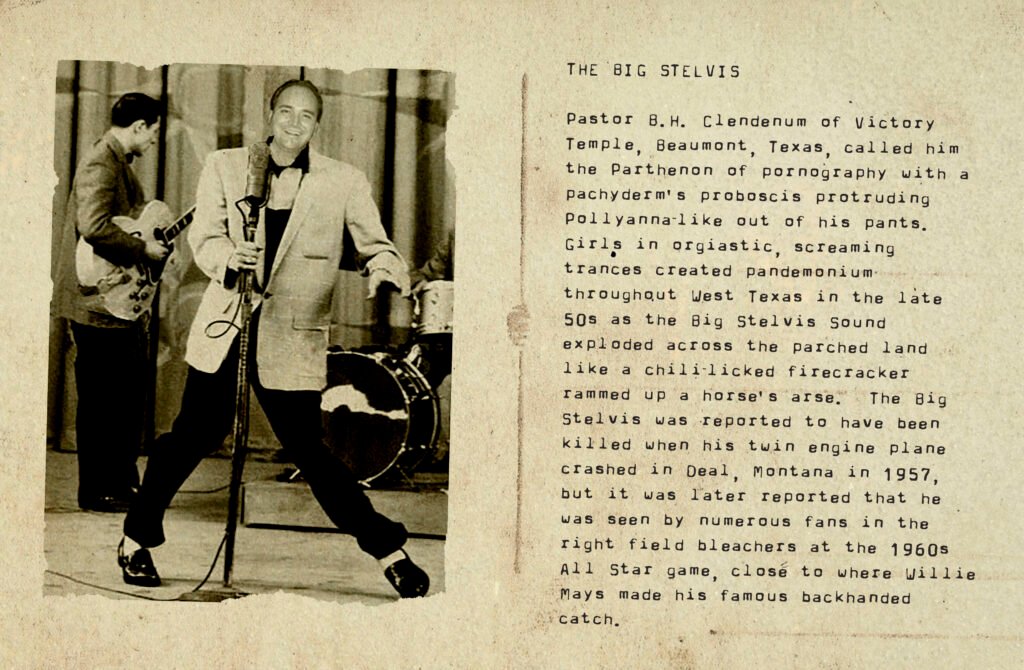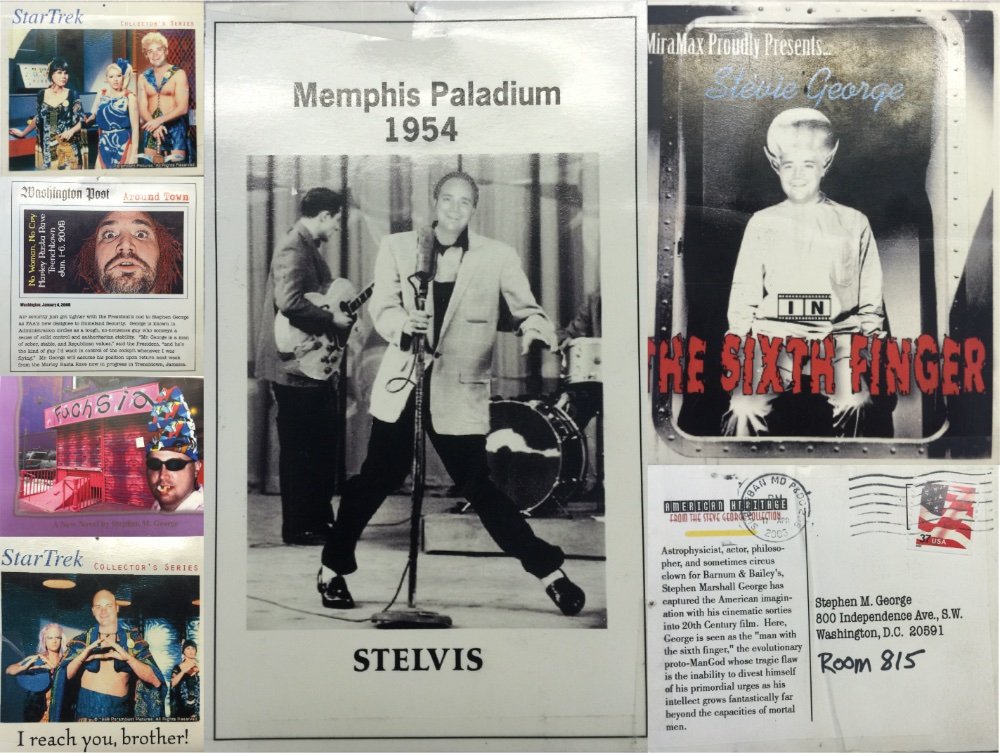
A Government Legend. A Postal Mystery. A Pachyderm in Polyester.
Long before The Big Stelvis became a whispered name in federal hallways, before his myth rippled across cubicle farms like a low-level security breach, he was just a spark in the mind of a retired technocrat with a wicked sense of humor and a deep understanding of bureaucracy.
Uncle Ronnie—30-year veteran of the U.S. Department of State and Asheville eccentric, had seen the inner gears of government grind for decades. When his nephew joined the Federal Aviation Administration in 2002, he didn’t send flowers or a congratulations card. He launched a postal campaign of creative disruption.
From the man-cave in his Northern Virginia home at the time, Ronnie began crafting strange and elaborate postcards, each one an absurdist vignette stitched together with out-of-context images, surreal narratives, and a level of commitment that bordered on performance art. They were addressed simply to the FAA’s general mailing address in Washington, D.C., left to meander the bureaucratic maze like classified documents looking for a signature.
Eventually and mysteriously, they would reach their intended recipient.
And thus, The Big Stelvis was born.


A polyester-draped parody of rock and gospel icons, Stelvis was equal parts Elvis impersonator, apocalyptic preacher, and underground sensation. According to Ronnie’s ever-evolving mythos, he was once dubbed “the Parthenon of pornography” by a Texas televangelist and caused orgiastic pandemonium across West Texas in the late ’50s. He allegedly perished in a plane crash over Deal, Montana—but fans swore they spotted him years later in the bleachers at a baseball game, dangerously close to greatness.
The postcards became legendary within a small FAA geekdom. Rumors of “The Monkey Cookie,” “George in the Matrix,” and “Stelvis at the Palladium” swirled through meetings and break room chatter before the actual postcards arrived at my desk—each one stranger and more elaborate than the last.Over the years, these postal oddities became a cult archive of absurd federal folklore, a satirical mirror held up to the machinery of government and the mythology of America itself.
Now, the Stelvis catalogue lives on—not just in stories whispered over office coffee, but right here, where his legend belongs.
The Big Stelvis.
Out of the mailroom. Into the mythos.

